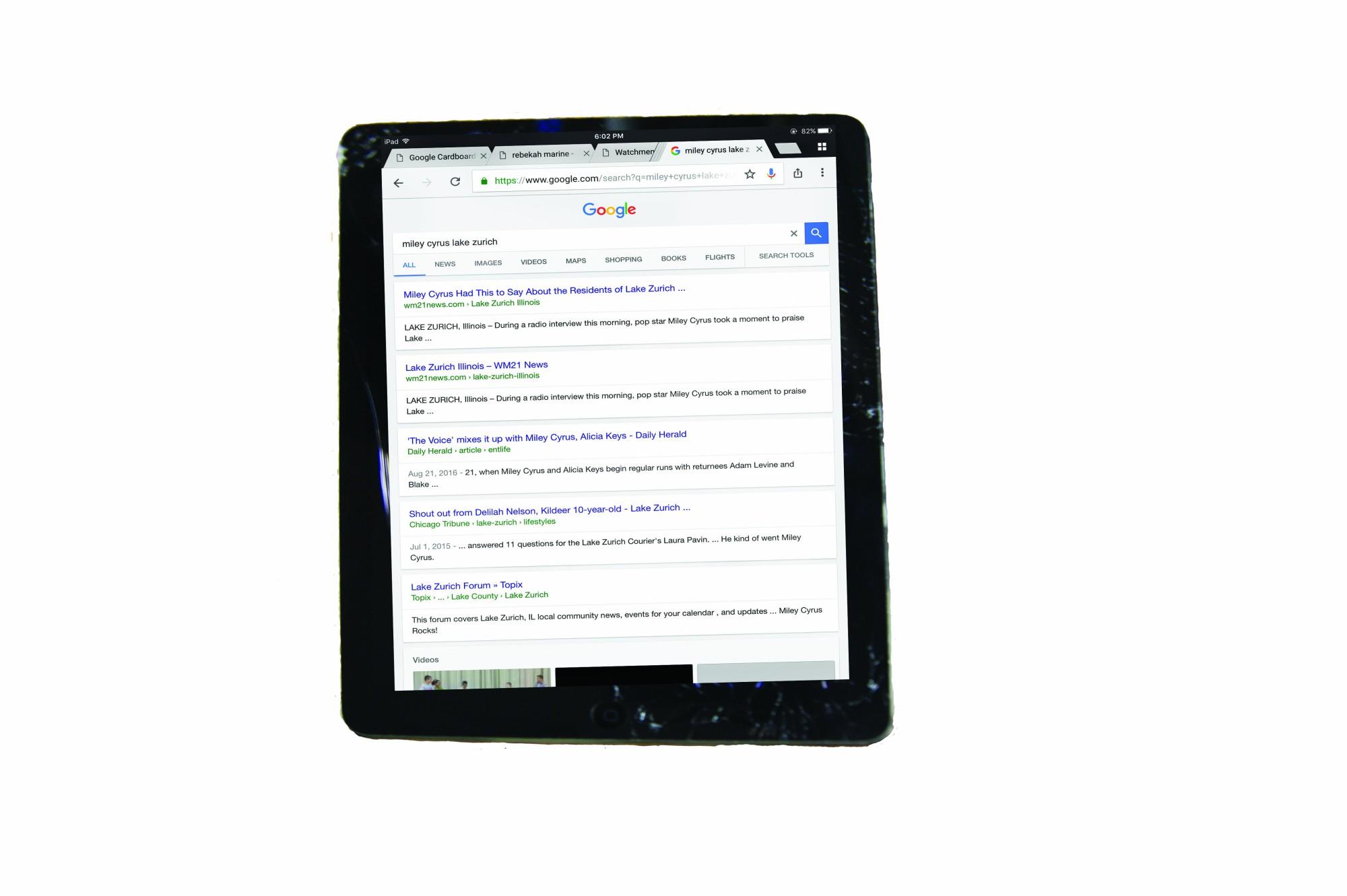Fighting Fake News: it may be taking over the internet, but there is a way to curb its presence
March 17, 2017
Did you hear that Miley Cyrus’ car broke down in Lake Zurich? That President Trump will release secret technology to the public? That China wants to start World War III?
The questions posed are lies to attract readers to fake news stories, or articles that are based on falsehoods. These stories can even pass off inaccuracies as facts to the public, as if they were articles from the mainstream media.
“Our generation is taking that news at face value and believing it,” Megan Groeller, senior, said. “That’s not ok because when you have news sources that aren’t reputable, you’re undermining the power of the news and the news is such a powerful thing that you want to be in the right hands.”
When the news is not in the right hands, people fall prey to believing falsehoods, according to Groeller.
“A lot of it is financial. There’s a story about these two teen boys in Macedonia who fabricate all [this] political stuff and they get paid for how many clicks they get,” Julie Smith, media literacy professor at Webster University and Southern Illinois University at Edwardsville, said. “These kids have no political dog in the fight. They don’t care who wins our election, but the more outlandish material they create, the more money they make. A lot of it’s clickbait, where sites will [publish] anything to get clicks, regardless of whether or not it’s true.”
Even when many stories seem far fetched, people will still share them, Groeller said. Many times, Smith said, people believe these fabricated stories because they want them to be true.
“Most of my college students last semester, for example, were very, very liberal and pro-Hillary Clinton and anti-Donald Trump. So, whenever I would show an example that made Donald Trump look bad, and had been fabricated, my students would say things like, ‘well, I know this was probably fake, but I really want it to be true’,” Smith said. “I think that plays in so much to what we believe. If it affirms what we feel, and we agree with it, we’re less likely to check for authenticity.”
If people do not check for authenticity of a story, Smith warns, fake news will continue to dominate the internet. However, Smith points out how to decrease the presence of fake news.
“There should be media literacy implemented into your English class and your social studies class and your psychology class and your physics class and history. It is cross-curricular, meaning it really does fit everywhere,” Smith said. “That’s a feature and a bug at the same time because it does fit everywhere, but because of that, typically schools don’t have a set aside media literacy course. Teachers need training on how to do it and they just need ideas and resources.”
This cross-curricular practice is implemented into some classes at Lake Zurich, according to Eric Hamilton, assistant principal of curriculum and instruction.
“[Media literacy is taught] in almost any social studies class, in which you’re looking a political cartoon, or talking about any source document,” Hamilton said. “It really is a matter in any class that is using outside sources, we constantly, as teachers, work on making sure that we have vetted the source for reliability and that’s something we teach [students] too: to see if it’s a reliable source and to see if there’s a bias in it.”
Outside of battling fake news through teaching media literacy, the prevalence of fake news on social media can also be combated. On social media platforms, ‘there has to be some sort of filtration system to what is being posted,” said Groelller.
This idea of filtering the lies from the truth is something that Mark Zuckerberg, Founder and CEO of Facebook, has been working on. He outlined his plan to battle fake news on Facebook in a November 18 post. Some of these ideas include: stronger detection, third party verification, warnings, and the disruption of fake news economics.
However, Smith adds that the only real way to battle fake news is to teach readers to have ‘healthy skepticism.’ Smith also suggests that readers obtain their news from a variety of diverse sources and mediums.
“It’s kind of like, how in your friendship group, you know when somebody is telling you a story when they are embellishing? You want to have that same perception about news,” Smith said. “Like that source, well I know that they’re really over dramatic, or they tend to exaggerate. You want to have that same filter for all the places you get news.”
Obtaining facts from a variety of sources and understanding how those sources will project the news is an idea that Lake Zurich teachers stress, according to Hamilton.
“[Students] need to know that every news outlet has bias. For us to fully educate [them], [they] need to make sure that [they] are aware that there are multiple lenses to which any event can be processed,” Hamilton said. “For [students] to be educated, [they]need to be able to see the different lenses. If [they] look at one story presented by different news outlets, it will look entirely different. To be an educated person in society, [students] have to discern what [they] believe is factual.”
To find what is factual and what is fictional, Smith stresses the importance of educating readers through teaching students how to be media literate.
“Let everything be legal, but make sure we understand that the responsibility to figure out what’s true, valid, and meaningful, and real. It’s our job,” Smith said. “My description of media literacy is that we can’t change the message and we can’t change the sender, but we can educate the receiver. It’s our only option.”
